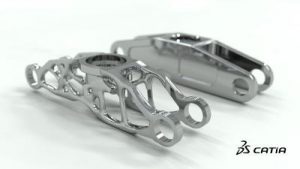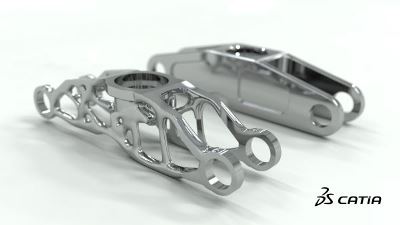Well thought-out design is often an important prerequisite for innovation. Thanks to generative design, you can now leave most of this ‘thinking’ to smart algorithms.
What is generative design?
Generative design is a process in which software based on algorithms independently generates design proposals. Designers enter beforehand as many variables as possible, such as the intended target, conditions and available material, as well as matters like cost reductions. An algorithm then rapidly calculates thousands of possible designs and selects the models that best satisfy the predefined requirements.

An example will clarify this. Imagine you’d like to design a chair. You tell the software that your chair should be made of wood, and you also enter the chair’s maximum strength. The system will subsequently get to work and present the ideal chair, based on your set requirements.
What’s the link with the evolutionary process in nature?
All kinds of mutations continuously take place within life forms. Forms of life with the most successful changes have the greatest chance of survival, and therefore also the best potential to produce healthy offspring. This is how ‘successful’ mutations are best passed on to the next generation, and how a species finally adapts as best it can to the environment.
A similar principle occurs in generative design. The software rapidly makes all kinds of changes to the design, in which the effect of a change is constantly measured. The most successful changes will remain, once again forming the departure point for new optimisations. Ultimately, those designs will remain that best meet the defined desires and requirements.
What is the link between biomimicry and generative design? Designs generated with generative design, due to the reasons stated above, strikingly often have organic, natural-looking shapes. This is not surprising, as nature works according to the same principle: mutations are constantly taking place, and the best variants remain. Generative design will therefore often seemingly mimic this nature, which is biomimicry’s exact intent.
What are the advantages of generative design?
Generative design has several great benefits:
- Breaking down creativity barriers
Firstly, the designer’s creativity is no longer a limiting factor. The software can come up with design proposals that engineers have not, or barely, thought of, breaking down the restrictions of human creativity.
- Saving costs
Retrospective extensive testing and simulating is no longer necessary, as this is already built into the process. The software tests the designs ‘on the fly’ via built-in simulation. The design is based on these results. Expensive changes afterwards are therefore no longer needed, preventing any unpleasant surprises later.
- Accelerating design processes
Generative design enables the design of a huge amount of designs. People of flesh and blood would need much more time to create this same amount of designs.
- Enabling innovations
Generative design generates designs that are optimised for predefined restraints and conditions, which can form the basis for other innovations.
Does generative design make people completely superfluous? No, and there are two reasons for this. First of all, designers will always be needed for establishing the requirements. Furthermore, algorithms have no sense of aesthetics and emotion. A car’s design can therefore only partially be left to an artificial intelligence. A person will always have to optimise the design for humans.
For which applications is generative design suitable?
Generative design can be used for nearly everything in which the product is intensively exposed to the forces of nature, such as gravity or air resistance. The algorithms can account for this physics and generate optimal designs. The true worth is revealed when small details lead to huge changes. Just think of the design of aeronautical parts or in Formula One, where minor adjustments can have major impacts on, for instance, aerodynamics.
What is the link with additive manufacturing? Additive manufacturing is the rapid production of prototypes and parts by 3D printing. This principle fits seamlessly with generative design, as you can quickly generate designs via generative design, which can subsequently be turned into actual products by additive manufacturing. This enables a vastly streamlined rapid prototyping.
Additive manufacturing software is also a kind of ‘reality check’ for designs generated with generative design. A design may in theory best correspond with the entered parameters, but may have unforeseen disadvantages in the real world. Additive manufacturing makes this ‘real world’ testing easy and cost-effective.

